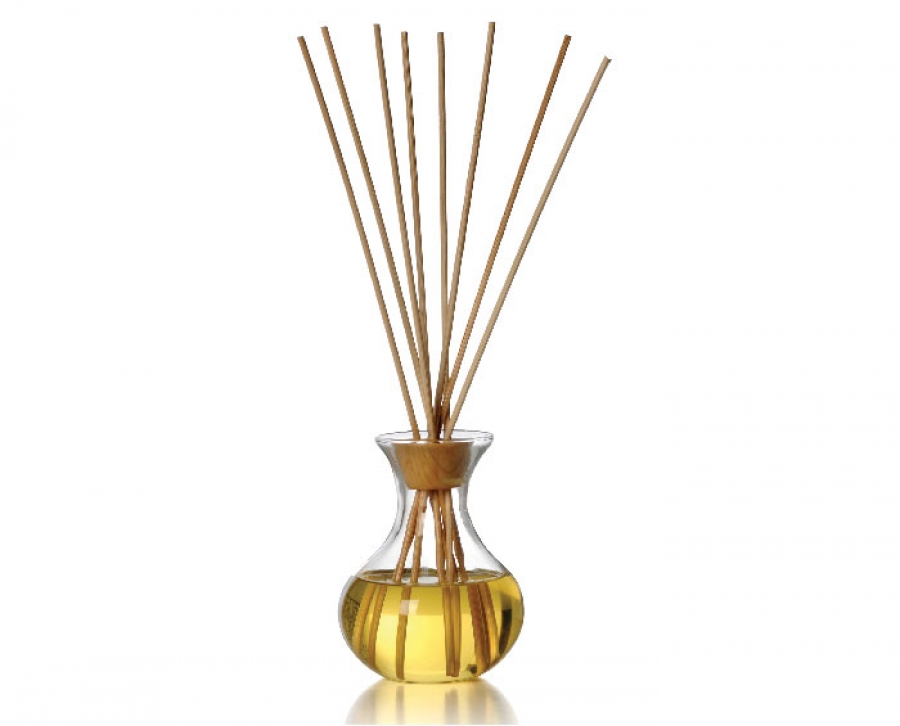The practice of aromatherapy emerged approximately in 1240 B.C. throughout Israel and Egypt, the birthplace of medicine, perfumery, and pharmacopeia. Essential oils were used to anoint the pharaohs, scent the catacombs and mummies tombs of Egyptian royalty, aid in healing wounds from battle, or were presented during religious ceremonies as symbolic icons of sacredness. A special anointing oil that included myrrh, cassia, cinnamon, and calamus in an olive oil base is cited in the Bible. The first recorded volumes of materia medica, Herbarius, were written around 425 B.C. by Dioscorides. Indeed, throughout history the plant kingdom has evolved exponentially and continues to provide immeasurable beauty and the highly esteemed benefits of therapeutics. The countless sources of information on aromatherapy are testimony to its widespread popularity in all facets of health and beauty.
1. Scent is in the Air – Olfaction involves the detection and perception of odors in the air and our ability to detect scent is dependent on the olfactory system. As odor molecules enter the nose, they dissolve in the mucous membrane within the olfactory epithelium that contains olfactory receptors. The olfactory epithelium rests in the nasal cavity and is latticed to the olfactory nerve that sends impulses via the olfactory bulb to the brain as we detect scent. The olfactory system is also linked to the limbic system, a section of the brain that registers emotion and is closely-linked to memory and recall. The sense of smell is 10,000 times more powerful than the sense of taste and is considered to be the oldest sensory system in nature. Anosmia is smell blindness, or the loss of the sense of smell. An individual can be anosmic to a specific compound, meaning that they may have a normal sense of smell, but there may be a particular odor that their sense of smell is unable to detect. As each individual is unique, so is his or her ability to detect and process scent.
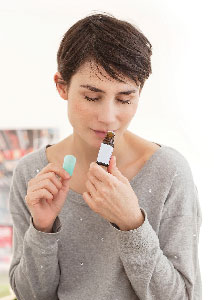 2. Essential Oil Electricity – Essential oils contain frequencies in the form of kinetic energy. These frequencies are reputed to have a harmonious vibration that resonates with the electrical energy impulses of the body, making essential oils more viable in treatment. Essential oil frequencies stem from the chemical bonds of the elements and their molecules that make each oil unique in its characteristics. Each essential oil has a unique spectrum of harmonics – when an essential oil is applied to the body, its molecules resonate with the different tissues and organs according to their unique spectrum of harmonics. This phenomenon is why some essential oils are best suited for muscle, nerves, or skin. This observation applies only to quality-grade essential oils that have not been adulterated in some way with chemical ingredients.
2. Essential Oil Electricity – Essential oils contain frequencies in the form of kinetic energy. These frequencies are reputed to have a harmonious vibration that resonates with the electrical energy impulses of the body, making essential oils more viable in treatment. Essential oil frequencies stem from the chemical bonds of the elements and their molecules that make each oil unique in its characteristics. Each essential oil has a unique spectrum of harmonics – when an essential oil is applied to the body, its molecules resonate with the different tissues and organs according to their unique spectrum of harmonics. This phenomenon is why some essential oils are best suited for muscle, nerves, or skin. This observation applies only to quality-grade essential oils that have not been adulterated in some way with chemical ingredients.
3. Plant Instincts – Essential oils are also used by plants themselves. Naturally occurring essential oils in plants help with infection and humidity control, hormonal effects, wound healing, and attracting or repelling insects, birds, and animals.
4. The Rage About Rose Oil – The rose flower and its unmistakable essence has been symbolic with fragrance, romance, and feminity for centuries. The history of the ancient flower dates back 40 million years to the Tertiary era as evidenced in fossils from excavation. Rose oil was one of the precious and rare oils used by the royal-court perfumers to scent gloves and create perfumes for Marie Antoinette. Rosa damaenca, the “queen of essential oils” is one of the most prized and expensive oils, both in aromatherapy and perfumery. The distillation of rose oil is labor intensive – it can require as much as 100,000 blossoms to yield one ounce of this precious oil. Rose oil of exceptional quality can cost over $2,100 for 200 milliliters and about 70 percent of the world’s supply of rose oil is from Bulgaria. Rose oil can often be adulterated with geranium or palmarosa oil due to the scent similarities. Beware of chemical constituents that may be added to value-priced products – the price of the oil should indicate its true quality. Rose oil can be applied neat (directly to the skin without a carrier oil) and is a favorite in skin care because of its emollient, antioxidant, antiseptic, anti-inflammatory and astringent properties.
5. Multitasking – An essential oil may have several benefits and various effects on the body at the same time. Certain oils may be beneficial when inhaled, or used in a diffuser – while at the same time, they may be considered cautionary if applied to the skin. The functions and chemistry of an essential oil should be carefully studied prior to use on a client. An aromatherapy intake form and consultation should be conducted prior to using essential oils for skin and body care – particularly for clients with hypersensitive sensitive skin, allergies, compromised skin as a result of a health condition, or individuals taking medications. No two individuals may respond exactly to an essential oil the same way – no matter how it is applied. Also, one must consider that each brand of essential oil varies in potency, quality, and purity; study these features carefully before purchasing and avoid choosing price over quality.
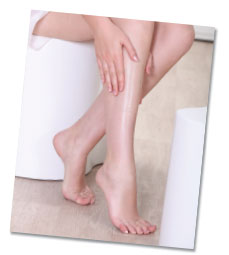 6. What is in a Name – When purchasing an essential oil, be sure to look for the botanical species name of the plant from which the essential oil is obtained, which should appear on the packaging label in Latin. Essential oils have their primary identification name such as lavender; however, there are several species of lavender, and each species may possess different properties of molecular activity varying the potency, activity, and safety of an essential oil. Also identify the country of origin or where the essential oil is said to be imported. Various countries are known for a specific quality and export of essential oils. For example, Australia is reputed to have the best tea tree (melaleuca alternifolia) oil. Vendors who list the botanical species identification in Latin and the country of origin are generally reputable, proud of their product, and may share additional information such as laboratory values from gas chromatography or mass spectroscopy.
6. What is in a Name – When purchasing an essential oil, be sure to look for the botanical species name of the plant from which the essential oil is obtained, which should appear on the packaging label in Latin. Essential oils have their primary identification name such as lavender; however, there are several species of lavender, and each species may possess different properties of molecular activity varying the potency, activity, and safety of an essential oil. Also identify the country of origin or where the essential oil is said to be imported. Various countries are known for a specific quality and export of essential oils. For example, Australia is reputed to have the best tea tree (melaleuca alternifolia) oil. Vendors who list the botanical species identification in Latin and the country of origin are generally reputable, proud of their product, and may share additional information such as laboratory values from gas chromatography or mass spectroscopy.
7. The Golden Carrot – Carrot seed oil is obtained by steam distillation from the dried seeds of the wild carrot, daucus carota. Carrot seed oil is a great source of vitamin A and essential fatty acids that make it a natural for anti-aging synergies used in skin care. Carrot oil also acts as a natural tanning enhancer. The natural color of carrot oil is deep gold and will effectively enhance formulas (between two to 10 percent), either alone or when combined with other tanning enhancers like tyrosine or riboflavin in sun care products. Choose carrot seed oil for its powerful vitamin A antioxidant and anti-carcinogenic properties, as well as its ability to tone, detoxify, and act as an antiseptic. Carrot seed oil is well-suited with avocado or grape seed oil as a carrier and blends wonderfully with geranium, lavender, frankincense, orange, or grapefruit essential oils. Carrot oil may be very stimulating and is not advised during pregnancy.
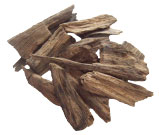 8. Soothing News – Essential oils can be beneficial for tired legs. Varicosities signal swelling in the veins of the legs and are often accompanied by loss of elasticity in the vascular wall and often signal compromised circulation. Any vascular condition requires evaluation by a physician before applying essential oils to the legs, especially if it is accompanied by edema. There are many lotions and topical preparations containing herbs, such as horse chestnut that will bring relief to tired legs. Essential oil formulas for tired legs can be found in professional aromatherapy books and may include lemongrass, lemon, geranium, helichrysum, juniper, lavender, orange, rosemary, and tangerine.
8. Soothing News – Essential oils can be beneficial for tired legs. Varicosities signal swelling in the veins of the legs and are often accompanied by loss of elasticity in the vascular wall and often signal compromised circulation. Any vascular condition requires evaluation by a physician before applying essential oils to the legs, especially if it is accompanied by edema. There are many lotions and topical preparations containing herbs, such as horse chestnut that will bring relief to tired legs. Essential oil formulas for tired legs can be found in professional aromatherapy books and may include lemongrass, lemon, geranium, helichrysum, juniper, lavender, orange, rosemary, and tangerine.
9. Bling Bling – The most expensive essential oil in the world is agarwood, or oud oil, which is extracted from the tree itself. Found in Southeast Asia and China, it is currently listed on the endangered species list. It can take up to 80 years of cultivation for the oil to be harvested, and its price tag can reach up to $13,000 per pound. The unique extraction process for the oil relies on a fungus that grows on the tree that will saturate the wood to create an oleoresin. Agarwood oil is antimicrobial, antipruritic, anti-inflammatory, detoxifying and healing, and is said to be valuable for skin care. The oil is very penetrating and the scent can last overnight.
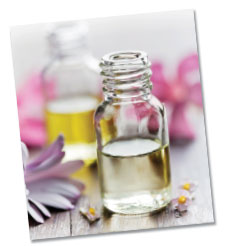 10. For the Love of Flowers – Hydrosols are the precious aromatic waters that remain after an essential oil is distilled by steam or water distillation. It is a special by-product that is often underestimated and overlooked. Hydrosols are a great addition to natural skin care protocols, instead of using water itself. They can be blended with other hydrosols, sprayed on the skin as a tonic, or blended with natural clay masks. Because they are the resultant of steam and the essential plant material, they are generally less sensitizing to the skin, yet contain the vital constituents. A hydrosol is not the same as a floral water – many floral waters are often water or purified water blended with essential oils and do not have the same vibrational power of the true plant essence.
10. For the Love of Flowers – Hydrosols are the precious aromatic waters that remain after an essential oil is distilled by steam or water distillation. It is a special by-product that is often underestimated and overlooked. Hydrosols are a great addition to natural skin care protocols, instead of using water itself. They can be blended with other hydrosols, sprayed on the skin as a tonic, or blended with natural clay masks. Because they are the resultant of steam and the essential plant material, they are generally less sensitizing to the skin, yet contain the vital constituents. A hydrosol is not the same as a floral water – many floral waters are often water or purified water blended with essential oils and do not have the same vibrational power of the true plant essence.
References:
- Carrot Seed Oil, World Carrot Museum. http://www.carrotmuseum.co.uk/
- Schnaubelt, Kurt, Ph.D., (2011). The Healing Intelligence of Essential Oils, Healing Arts Press.
- Buhner, Stephen Harrod, (2014). Plant Intelligence and the Imaginal Realm –Beyond the Doors of Perception into Dreaming of Earth, Bear & Company.
 Erin Madigan-Fleck, N.M.D., C.N.H.P., L.M.C., is an educational icon known for her expertise in dermatological sciences, natural health, and holistic aesthetics. She is a dynamic lecturer and advanced guest educator for numerous prestigious aesthetic, medical, and natural health institutes and has authored many articles on aesthetic sciences, health, and wellness. Madigan has over 30 years of experience in the aesthetic and natural health industry and is licensed as a master cosmetologist and aesthetic instructor in Georgia. She is a nationally certified natural health professional, holds a bachelor’s degree in natural health, a master’s in holistic nutrition, and is a doctor of naturopathic medicine.
Erin Madigan-Fleck, N.M.D., C.N.H.P., L.M.C., is an educational icon known for her expertise in dermatological sciences, natural health, and holistic aesthetics. She is a dynamic lecturer and advanced guest educator for numerous prestigious aesthetic, medical, and natural health institutes and has authored many articles on aesthetic sciences, health, and wellness. Madigan has over 30 years of experience in the aesthetic and natural health industry and is licensed as a master cosmetologist and aesthetic instructor in Georgia. She is a nationally certified natural health professional, holds a bachelor’s degree in natural health, a master’s in holistic nutrition, and is a doctor of naturopathic medicine.
